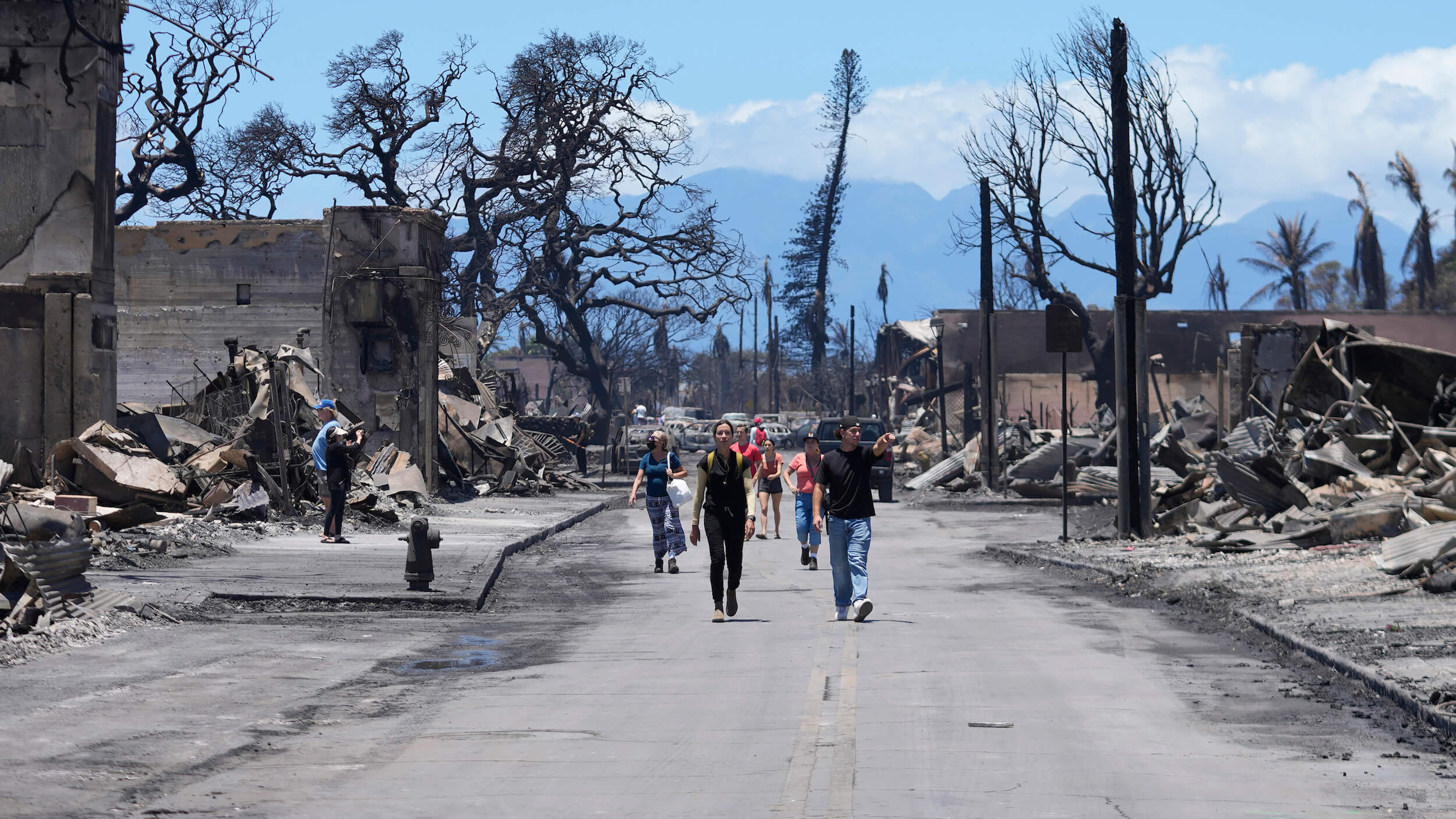Why one firefighter is calling out Maui wildfire conspiracy theories

Fires were still burning on Maui when the conspiracy theories started to surface.
Mislabeled videos and images spread across social media as users called into question the origins of the fires, which have killed more than 99 people and destroyed over 2,200 buildings. One leading theory falsely suggested that the fires were caused by giant lasers.
Michael Clark, a wildland firefighter based on Oahu, soon decided he had seen enough. He made a post of his own, responding to a TikTok claiming that the fires were a “direct energy weapon assault.”
“Every year, there’s some conspiracy theorist out there that says, ‘These fires were started by laser beams,’ and, ‘How come the houses are flat but the trees are still standing?’” Clark said in a video posted to his Instagram Saturday. “It’s just something so gross. … You’re trying to get views and clicks off a horrific event. Like, the death toll is still rising, and you’re out there saying that this was started by laser beams?”
Clark didn’t work the Maui fires, but he told Poynter that he felt a responsibility to calm people down and stop the spread of those lies.
“It’s kind of concerning to see how many people think that there’s this giant laser beam coming down from the sky, and they’re not going to try to own up to climate change or anything like that,” Clark said in an interview. “So I just thought I’d take it upon myself as a professional in the wildland firefighting career to try and speak up.”
Experts are still working to determine the cause of the fires, which started Aug. 8. But many agree that environmental factors likely exacerbated the disaster. Winds from Hurricane Dora, a Category 4 storm that passed south of Hawaii last week, fanned the flames, and the area was already under drought conditions.
The fires drove thousands of people to evacuate, and local officials warn that the death toll will likely rise as they continue to search the burn area. As of Tuesday afternoon, only a quarter of the burn area had been searched so far, and the disaster had been deemed the deadliest U.S. wildfire in more than a century.
“Wildland firefighting in Hawaii is very unique,” Clark said. “We have a lot of guinea grass and a lot of quick-burning fuels, and normally, you imagine Hawaii as this lush, green, tropical place — which it is — but it has microclimates and there’s certain parts of the island that get super, super dry like the desert. And so, especially with our strong winds that are trade winds, if there’s one spark, it completely goes off there.”
Clark said that when he first started wildland firefighting nearly five years ago, he had never heard of conspiracy theories regarding wildfires. But over the years, he’s watched them become increasingly common. In 2020, he went viral for debunking misinformation about wildfires in California.
He encouraged people who want to learn more about the situation in Maui to start with local government officials and leaders — people whose jobs are to keep the community updated. Clark said he’s not sure why conspiracy theories often arise after natural disasters but noted that they take attention away from topics that require more serious consideration, like climate change.
“I don’t necessarily know if these people truly believe that this is happening or they’re just trying to get views, but it’s very inconsiderate against the people who lost families and who lost their homes,” Clark said. “And instead of taking the time and having a serious conversation saying, ‘Hey, how come Hawaii is so incredibly hot right now?’ they’re saying it’s lasers.
“They see a huge event, and they know people’s emotions are high, so they just stir the pot.”


